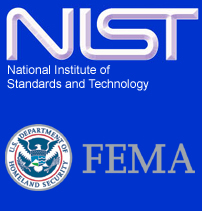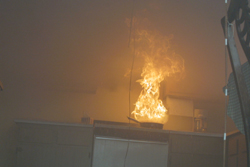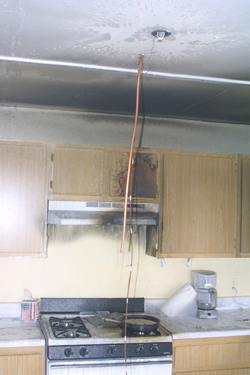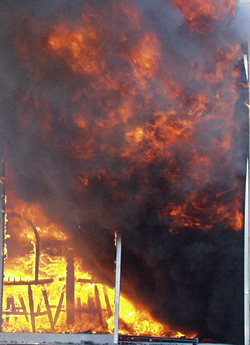
Fall Issue -- 2003
Page 1
Residential Fire Sprinklers Initiative
Page 2
Virtual Reality Firefighter Training
Water Mist Systems Protect Exposed Structure
Page 3
Hose Stream Performance Measured in Sweden
DoD Technology Can Help Visualize Fire Ground Information
Page 4
NIST Studies Trends in Firefighter Fatalities Due to Structural Collapse
Alfred P. Sloan Foundation Funds September 11 Digital Archive
PRINT
FRIENDLY VERSION (PDF format) ![]()

The US Fire Administration (USFA) working with national fire organizations, such as the National Fire Protection Association (NFPA), International Association of Fire Chiefs (IAFC), National Fire Sprinkler Association (NFSA), and American Fire Sprinkler Association (AFSA), has embarked on a new initiative to increase the number of homes in the United States that are protected with an automatic fire sprinkler system. The renewed support for residential sprinkler use has four component strategies: Develop an aggressive strategy for advocating sprinklers in residential buildings influenced or supported by the federal government; advocate localized sprinkler systems as a means of fire suppression in high risk areas (e.g., kitchens) for retrofit applications; provide advocacy and informational support among stakeholders including state and local decision makers; and ensure that the USFA continues to support research and development in residential fire sprinkler technology.
USFA has several research efforts that are fundamental to the success of this initiative. Working with the National Association of State Fire Marshals (NASFM), USFA is collecting data on residential sprinkler activations from across the nation.
Data from the 1980s suggests that usually only one sprinkler is activated in residential fires. If this can be confirmed with current data, this would support the concept of a residential sprinkler system design based an increased water flow for a single sprinkler. Currently, NIST is conducting a testing program in conjunction with Underwriters’ Laboratories to examine the potential of a single sprinkler design. NIST also is investigating the capabilities of localized suppression systems for controlling kitchen fires. The suppression technologies being examined include: Self contained systems, both dry chemical and wet chemical; a single sprinkler that would be supplied from the domestic water system.
For more information on the program, a copy of the National Residential Fire Sprinkler Initiative Report can be downloaded from the USFA website: http://www.usfa.fema.gov/media/ 2003releases/03-071503.shtm.

Cooking oil fire in a pan on the stove served as the test exposure fire.

With single sprinkler protection, damage was limited to the area directly above the fire.

Without sprinkler, the fire spread to flashover in the kitchen. (photo credit: Dan Schuh)
